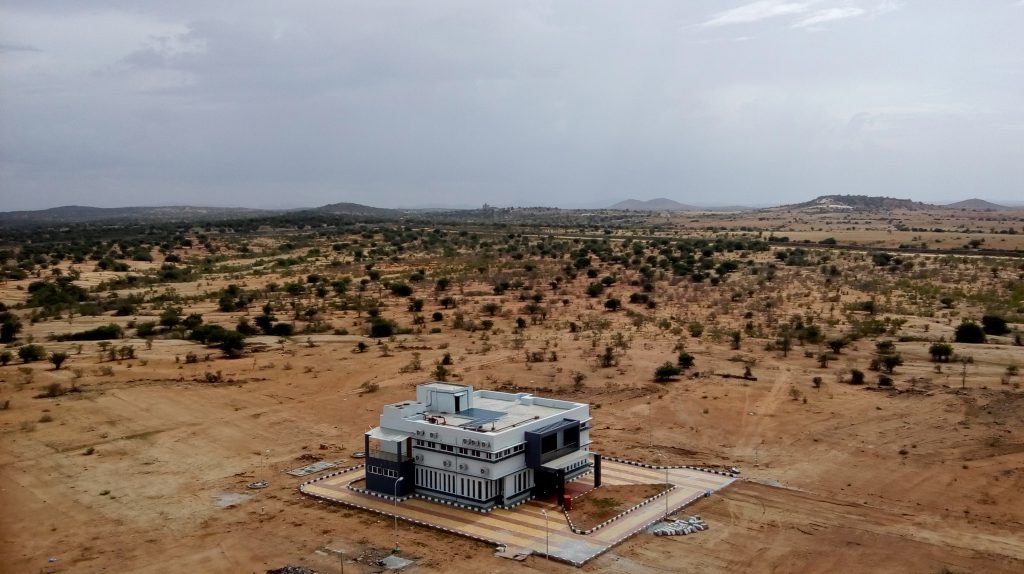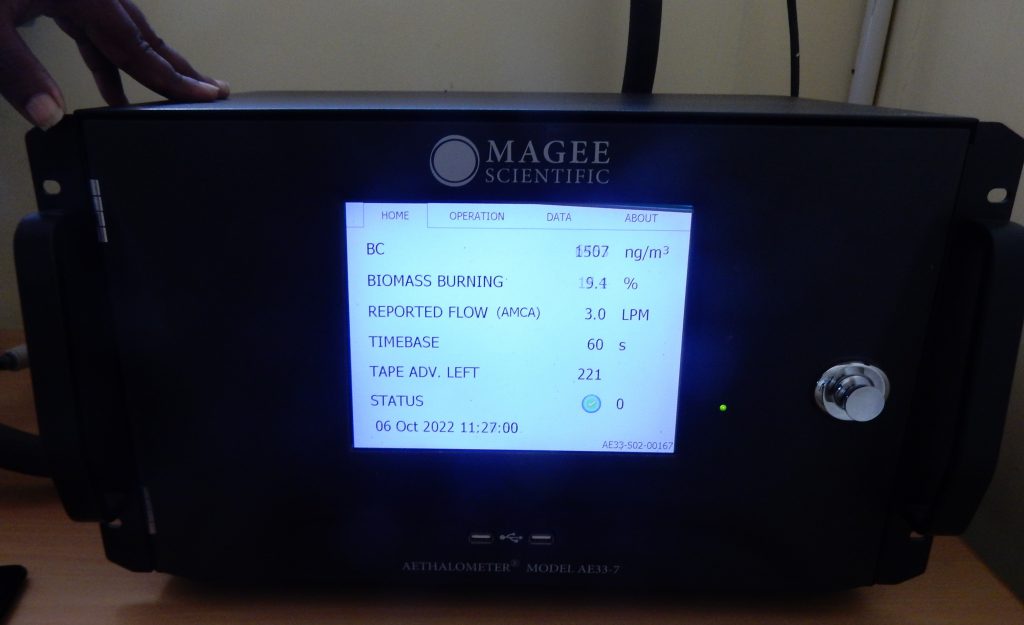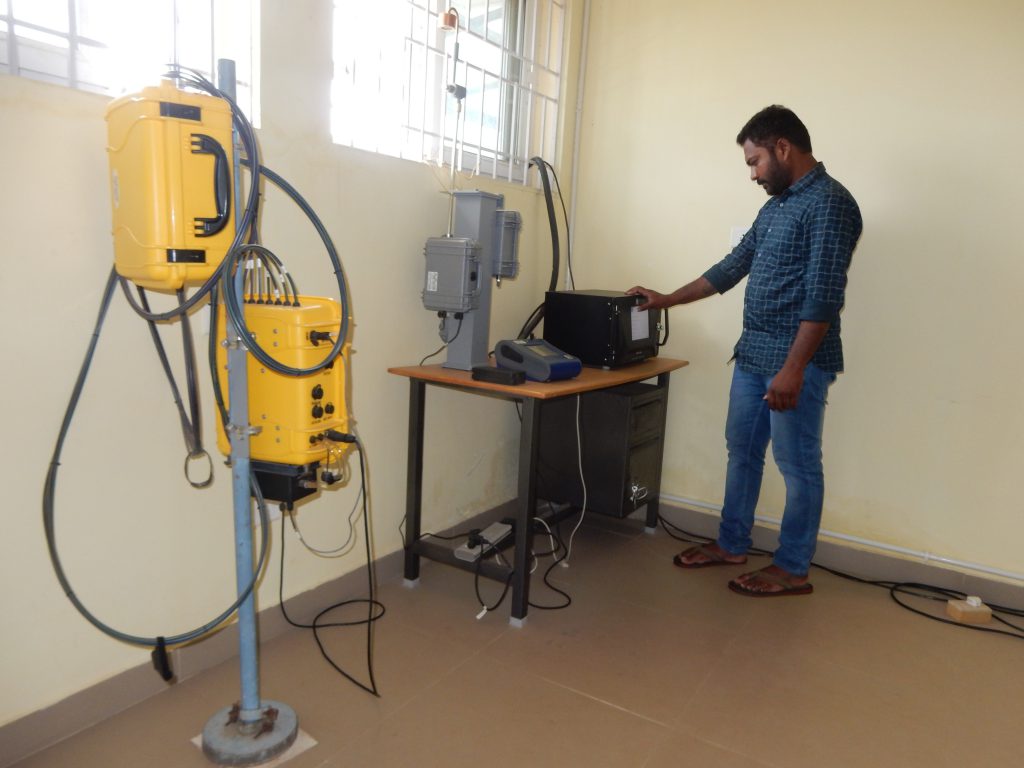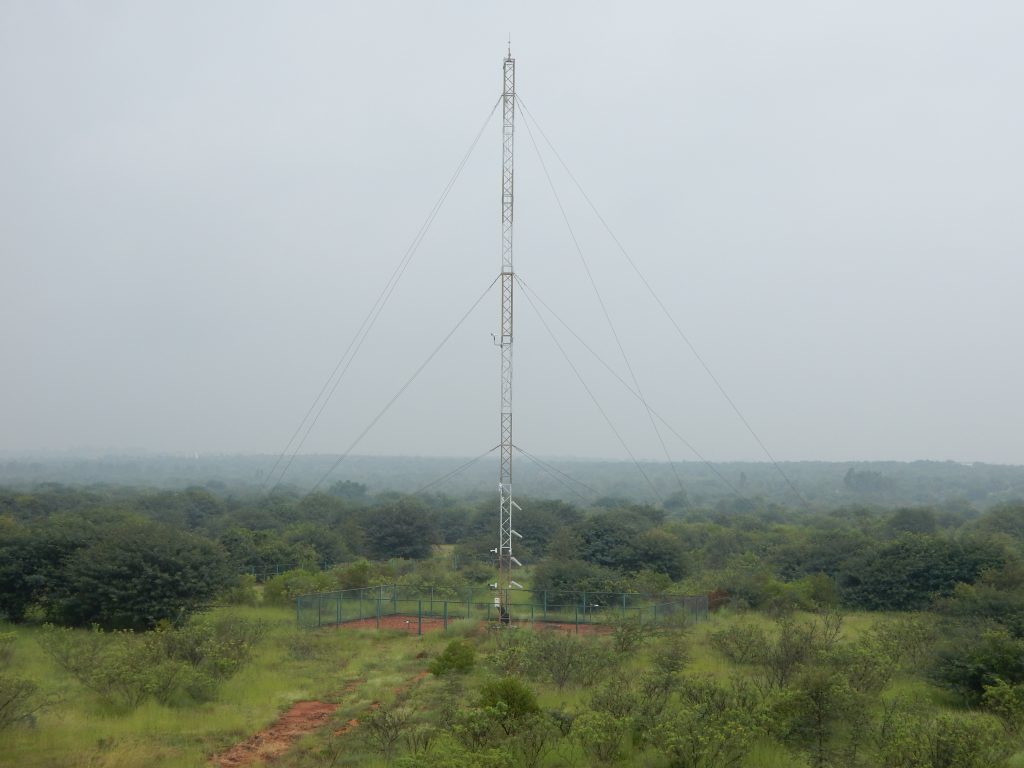IISc’s second campus at Challakere provides an ideal locale to study aerosols and their impact on climate

Travelling down the National Highway from Bangalore to Challakere in the Chitradurga district of Karnataka, and past the city limits, I noticed the air becoming fresher to breathe. Could it have been because of the reduced pollution, particularly the lower amounts of aerosols in the atmosphere, as the population density thins out?
Aerosols – tiny solid particles or liquid droplets suspended in air or gas in the atmosphere – have become a key player in the climate change saga. They can be found in the air over forests, seas, mountains, deserts, and even glaciers. No ecosystem is devoid of aerosols. Scientists believe that these ubiquitous tiny particles can have a colossal impact on human health and climate change. How do aerosols contribute to global warming and ozone layer depletion? How do they change rainfall patterns? In what ways do they impact human health? How do human activities contribute to aerosol generation?
It is to answer burning questions like these that a climate observatory was established in IISc’s second campus at Challakere in 2009. It was one of the first structures to come up on the new campus. Today, it has grown into an active research site where aerosols are tracked round-the-clock by a team of dedicated researchers.
Understanding aerosols
Since the 1980s and 1990s, the word “aerosol” has been splashed across newspapers, brought into sharp focus by the depletion of the ozone layer. It was used to specifically refer to the harmful chlorofluorocarbons emitted from devices such as hair sprays, spray paints, and perfume bottles. More recently, the word became popular in association with the transmission of the SARS-CoV-2 virus that caused the COVID-19 pandemic.
An aerosol is typically less than 1 μm in diameter. Aerosols can be of natural origin – in fact, these aerosols make up about 90% of what we find in the atmosphere. For example, volcanoes eject enormous amounts of ash, sulphur dioxide, and other gases that yield sulphate aerosols; oceanic microalgae produce a sulphurous gas called dimethyl sulphide that can be converted into sulphates in the atmosphere. Desert dust storms and forest fires also produce huge amounts of aerosols.
The remaining 10% of aerosols are anthropogenic, or human-made. There has been a rapid increase in the amount of anthropogenic aerosols since the start of the industrial revolution in the 18th century. Alarmingly, the current generation of anthropogenic sulphate aerosols has surpassed the amount produced naturally. Fossil fuel combustion produces large amounts of sulphur dioxide, which reacts with water vapour and other gases in the atmosphere to create sulphate aerosols. Biomass burning yields smoke mainly comprised of organic carbon and black carbon. Automobiles, incinerators, smelters, and power plants are among the large producers of sulphates, nitrates, black carbon, and other particles. Human activities like deforestation, overgrazing, and excessive irrigation change the land surface, increasing the rate at which dust aerosols are released into the atmosphere. Things we use in our daily lives – cooking stoves, fireplaces, candles, even cigarettes – are sources of aerosols. The complexity of the problem posed by the aerosols is compounded due to their interaction with clouds. Aerosols change cloud properties, alter precipitation patterns and hence alter the hydrological balance of the Earth.

Because these aerosols have such a huge impact on our climate – arguably even on humanity’s future on this planet – scientists have been racing to study their nature and impacts for the last few decades.
It is in this context that the climate observatory at Challakere was established. The goal was to study the climate in general, but also specifically the long-term effects of aerosols on the climate in a relatively undisturbed location. The sparsely populated locale, which was then a barren land without human inhabitants for a 15 km radius, provided the perfect setting to study the natural climate unadulterated by anthropogenic activities.
The sparsely populated locale, which was then a barren land without human inhabitants for a 15 km radius, provided the perfect setting to study the natural climate unadulterated by anthropogenic activities
In the initial days, with limited people and resources, setting up the observatory was fairly challenging, explains SK Satheesh, Chair, Divecha Centre for Climate Change, IISc, who led the efforts. The campus did not have electricity, water, or an internet connection and ran entirely on solar power. Even now, several activities at the Challakere campus rely on solar power. Since the time that the observatory was set up, there has been a steady increase in the population density in and around the campus. “We have witnessed an increase in the human population in the region, and so also the number of aerosols,” explains Ramamohan Lohia, a project associate at the climate observatory. This has allowed the researchers to track the increasing impact of human activity on the atmosphere closely.
Like Ramamohan, there are two more project associates stationed at the observatory. These project associates operate the various instruments and monitor the data that the devices pick up. Among the sophisticated devices set up here are an aethalometer, which measures the amount of black carbon in a specific location, and a nephelometer or aerosol photometer which calculates the concentration of suspended particulates. The observatory also has a multi-wavelength solar radiometer, which is operated when the sky is clear for measuring the optical aerosol depth, as well as a microtops, which is a hand-held sun photometer for measuring aerosol optical thickness. In addition to these, there is a 32-metre-high meteorological tower for boundary layer studies which has sensors at different heights to track wind speed and direction, relative humidity, temperature, and rainfall levels. All these devices are operated throughout the year and around the clock. Some devices, like a dust deposition gauge, are used when needed – such a device enables monitoring of the deposited particulate matter that rapidly settles from the air.
Ramamohan says that he finds the work they do at the observatory quite interesting. Although human visitors to the campus are far and few between, he particularly enjoys the quietness of the campus.

In pursuit of soot
In addition to serenity and solitude, what motivated Satheesh to start long-term climate studies at Challakere was also its weather. Challakere, he says, represents a typical “continental” location characterised by long, dry summers and scanty rainfall, coupled with negligible atmospheric pollution. This makes it an ideal place to study background continental aerosols and surface radiation.
There is another advantage to studying Challakere’s climate, he explains. Climate labs in other parts of India do not have skies as clear and as clean as Challakere does, and therefore they struggle to separate atmospheric disturbances from aerosol measurements. The observatory, therefore, also serves as a calibration facility that provides data to correct for these aberrations.
Most aerosols reflect the sun’s energy back into space, and therefore, have a cooling effect. However, there is one particularly dangerous type of aerosol – soot, also known as black carbon – that contributes to global warming by boosting the effects of greenhouse gases in the atmosphere. Aerosols originating from sea spray, mineral dust, and volcanoes are coarse and have short atmospheric lifetimes, typically only a few days. But combustion processes, biomass burning, and plant or microbial materials are sources of carbonaceous aerosols, both organic carbon and solid black carbon. Black carbon is the main anthropogenic light-absorbing constituent present in such aerosols. They are generated primarily from the combustion of fossil fuels (such as gasoline and oil), and coal, wood, and other biomass.
There is one particularly dangerous type of aerosol – soot, also known as black carbon – that contributes to global warming by boosting the effects of greenhouse gases in the atmosphere
Since the industrial revolution, human activity has pushed more and more black carbon aerosols into the air which has aggravated global warming significantly. They are the third largest contributors to global warming after carbon dioxide and methane, according to an Intergovernmental Panel on Climate Change (IPCC) report. However, the same IPCC report indicates that a detailed understanding of how black carbon aerosols contribute to global warming calls for more research, especially on the aerosol shape, refractive index and lifetime, as well as the exact extent of emissions worldwide.

It is these aerosols, particularly the absorbing species known as black carbon or soot, that have consumed much of Satheesh’s attention over the past 25 years. His team at IISc has been measuring and analysing the levels and impact of black carbon aerosols in the atmosphere for many years – and they have continued these studies at the Challakere campus too. This has enabled them to better understand the role of these particles on climate change, precipitation, and human health. One of the key contributions of these studies, for example, was to upend the popular belief that natural aerosols are not connected to anthropogenic effects on the atmosphere. His team showed that natural aerosols tend to combine with anthropogenic aerosols and form a new type of aerosol that affects climate and pollution in completely different ways. Smaller, anthropogenic black carbon particles cling onto larger, natural dust particles, covering them and contributing to global warming even more.
The way forward
Currently, apart from the studies on aerosols, research on the atmospheric boundary layer has also been initiated at the climate observatory. Satheesh says, “Data on the atmospheric boundary layer or the lowest layer of the atmosphere is sparse in India. There are a few study stations, but getting a flat land like Challakere is very difficult. That is why organisations like ISRO use our data.” He adds that knowledge about the atmospheric boundary layer is crucial because this is where radiation from the sun and the Earth’s surface interact. The sophisticated instruments at the climate observatory enable them to obtain a three-dimensional view of atmospheric turbulence, which is the chaotic flow of air in the Earth’s atmosphere, and to understand the effectiveness of the atmospheric boundary layer in the dispersion of aerosols. These data are critical for climate-related studies.
Satheesh hopes that the data collected by the observatory will “provide ground truth for satellite data” – essentially serve to corroborate or verify data captured by satellites. “The advantage of satellite data is that it gives broad coverage. For continuous measurements, satellite data is the only option. However, satellites capture data from 800 km above,” he says. As the data is beamed back to the Earth and passed through the atmosphere, it can potentially suffer from distortions.“It has to be calibrated on a site on the ground. Now we can make continuous measurements at Challakere. So, I see it as a very good satellite validation site.”
Satheesh hopes that the data collected by the observatory will “provide ground truth for satellite data”
Satheesh also aspires to extend the observatory’s reach beyond the Challakere campus. He envisions researchers from other universities visiting and calibrating their measuring instruments in the campus’s unique environment. Radiometric calibration, or the conversion of the digital data recorded by satellites into physical units, is among the other future goals that he has for the observatory.
Another important role that the climate observatory at Challakere aims to fulfil is training young PhD and Master’s students in operating climate-related instruments.
The facility also intends to support students and entrepreneurs in building climate-related instruments and products. Satheesh recalls how, as a student, he learned to build a sunphotometer on his own. Young people have lost this type of skill; the current trend is all “plug-and-play,” he says. He hopes that the observatory at Challakere will help revive this practice.




